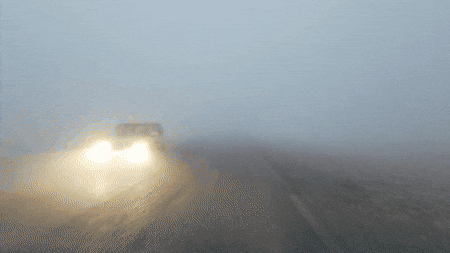Lake Charles, Louisiana – Dense fog is expected to blanket portions of the region Tuesday night through Wednesday morning, with meteorologists warning that visibility could drop below one-quarter of a mile in several areas.
The fog risk begins Tuesday evening, Nov. 18, and continues into Wednesday morning, potentially creating hazardous driving conditions for commuters heading to work or school. Weather officials are advising motorists to reduce their speed and exercise caution when navigating through fog-affected areas.
A particular concern involves the possibility of “super fog” formation in locations where agricultural burning is occurring. Super fog, a term used to describe an extremely dense fog that forms when smoke from fires mixes with natural fog, can create near-zero visibility conditions. This phenomenon poses significant dangers to drivers who may suddenly encounter visibility so poor that roads become virtually impossible to navigate safely.
The timing of the fog event corresponds with typical morning commute hours, increasing the potential for traffic incidents. When fog reduces visibility to less than one-quarter of a mile, the National Weather Service generally considers conditions hazardous enough to warrant public alerts.
Meteorologists recommend that anyone traveling on Wednesday morning should allow extra time for their commute and be prepared to adjust their driving behavior. Safe driving practices in dense fog include reducing speed, using low-beam headlights rather than high beams, increasing following distance, and using highway lane markers and the right edge of the road as guides.
Areas where agricultural burning has recently occurred face an elevated risk due to the potential for super fog development. The combination of moisture-laden air near the ground and particulate matter from smoke creates conditions where visibility can deteriorate rapidly and dramatically.
Commuters should monitor local weather conditions before departing and consider alternative routes if dense fog is reported along their normal travel paths.
